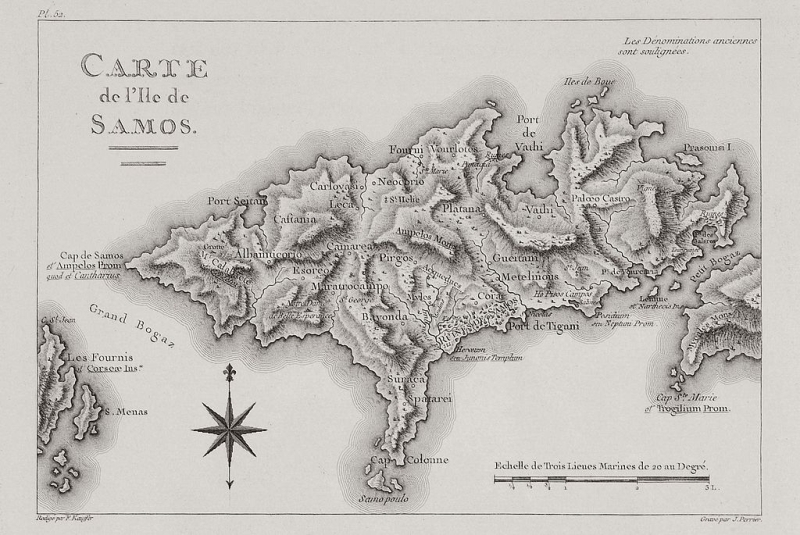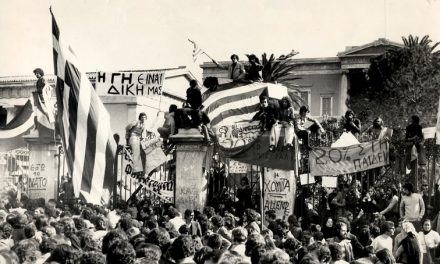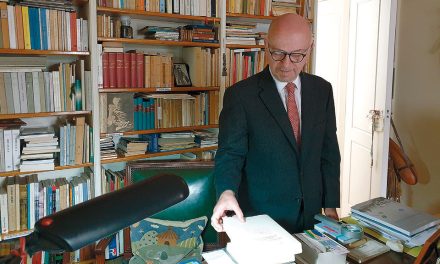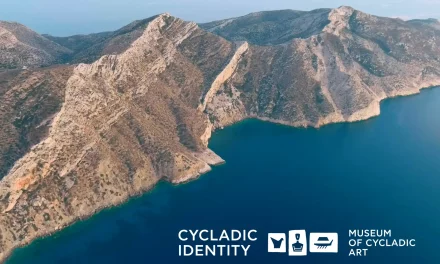Samos is a Greek island with a rich and varied history. Located almost 1 km from Asia Minor and the Turkish coast, Samos has a remarkable heritage: from an important commercial and maritime center of Ionia in antiquity, to the claim of its independence from the Ottoman Empire under the leadership of the “Carmagnoles”, a movement inspired by the French Revolution. Influenced by the industrialization of the 19th century and famous for its wines exported all over the world, even having the privilege in the past of producing “communion wine”, Samos is also an attractive tourist destination thanks to its beauties and its magnificent nature.
Map of Samos (Marie-Gabriel-Florent-Auguste Comte de Choiseul-Gouffier / Public Domain / Wikimedia commons)
Traces of Samos in Antiquity
Rich in history and natural beauties, the island of Samos, located at the east of the Aegean Sea near Asia Minor and separated from Anatolia by approximately 1 km wide, has a particular heritage over time. Populated since the Neolithic and later, in the Archaic period, by Ionians from mainland Greece, the island took its name, according to the Greek geographer and historian Strabo, by the Phoenician word sama which means “high”, probably because of the mountains that cover the island. Samos was also part of the Ionian Confederation, an alliance of twelve Greek Ionian cities on the coast of Asia Minor and adjacent islands, which united the Greeks in the region against the Persians.
From the 7th century BC, the island grew into an important maritime and commercial power establishing colonies on the Ionian coasts, in Thrace and the west of the Mediterranean. According to the Greek historian and geographer Herodotus the Samians were the first Greeks to cross the Pillars of Hercules (Gibraltar).
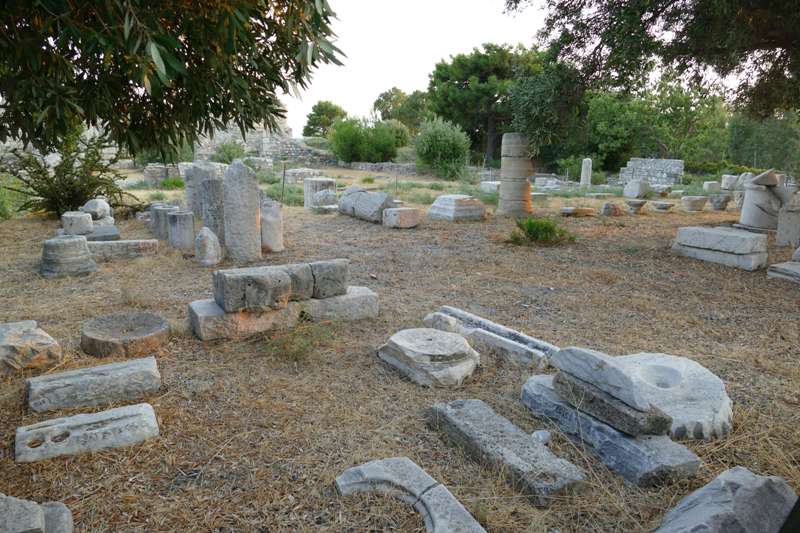 Pythagoreio / Bukvoed / CC BY. Wikimedia commons Source
Pythagoreio / Bukvoed / CC BY. Wikimedia commons Source
Samos in antiquity was a particularly rich and powerful island known for its vineyards and wine production, red pottery, iron mines, arts and crafts with bronze and jewelry factories, fruit production and olive oil. The island was the birthplace or residence of famous persons of antiquity such as the Greek philosopher and mathematician Pythagoras known for his theorem of geometry, the philosopher Epicurus, the astronomer Aristarchus, who was the first to propose that the Earth revolves around the sun, the Greek historian and geographer Herodotus, the fabulist Aesop etc.
During the period of its greatest strength in the 6th century BC, the ancient city of Samos created exceptional technical and artistic achievements using innovative methods. The Eupalinos tunnel, a 1 km long tunnel providing the town of Samos with fresh water, has been characterized as an ancient engineering marvel. Its construction is particularly remarkable because it is the first tunnel in history to be methodically dug from both ends. The Eupalinos tunnel, restored in 2017, is currently open to visitors and accessible in its entire length.
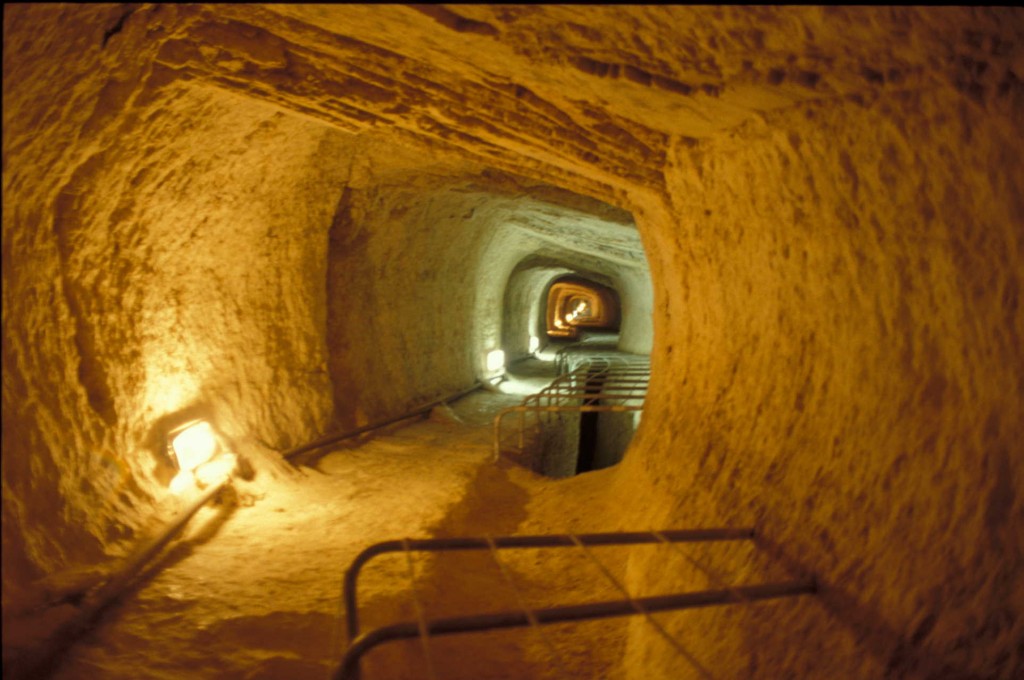
The Eupalinos tunnel
The second great work in the island is the great temple of Hera (Heraion), a colossal structure adorned with splendid sculptures making Samos one of the greatest sculpture centers of the Ionic world. The Heraion and Pythagoreion, the ancient city where the Eupalinos tunnel is located, have been listed as UNESCO World Heritage Sites since 1992. Samos continued to be an important merchant city throughout the Hellenistic and Roman periods disputing with Smyrna and Ephesus the title of “first city of lonia”.
The Byzantine and Ottoman periods
As part of the Byzantine Empire, the island belonged to the maritime theme under the name “the theme of Samos”, headquartered on the mainland, in Smyrna. In 1346, the Genoese seized Chios, Samos and Ikaria and delegated its administration to the Genoese family of Giustiniani.
Samos came under Ottoman rule in 1475, when the island was almost abandoned due to the effects of piracy and the plague. The island remained deserted for almost a century before the Ottoman authorities, having taken control of the Aegean Sea, made efforts to repopulate the island with settlers who came to settle from all over Greece. The settlers were attracted by the granting of certain privileges such as tax exemption and autonomy in local affairs. The island gradually recovered, reaching a population of around 10,000 in the 17th century, still being concentrated mainly in inaccessible mountainous areas within the island. It wasn’t until the middle of the 18th century that the coast began to be densely populated.
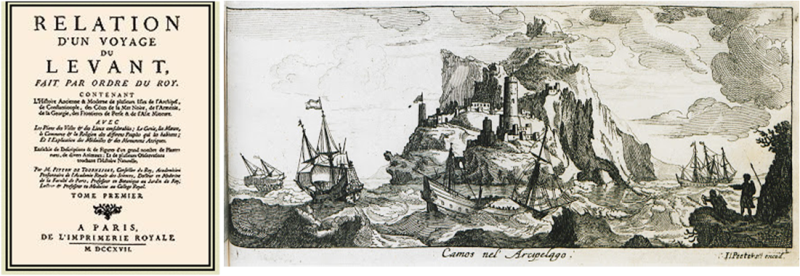
Joseph Pitton de TOURNEFORT “Relation d’un Voyage du Levant, fait par ordre du Roy. Contenant l’histoire ancienne & moderne de plusieurs Isles de l’Archipel, de Constantinople…” (vol. I, Paris, Imprimerie Royale, 1717)
Joseph Pitton de Tournefort, an eminent French botanist and physician visited Samos during a trip to the eastern Mediterranean from 1700 to 1702. Sent on a study mission by Louis XIV as he was considered an attentive observer, Tournefort wrote in his memoirs: “Today there are only ten to twelve thousand inhabitants on this island, almost all of them Greeks; they have a bishop who is also from Nikaria (Ikaria), and who resides in Chora. The Turks only keep a cadi and a voivode there”.
The fight for independence
Ottoman rule was interrupted during the Russo-Turkish War of 1768-1774, when the island came under Russian control in 1771-1774. The Küçük Kaynarca Treaty signed on July 21, 1774 between the Russian Empire and the Ottoman Empire contained clauses which allowed a great expansion of the commercial activities of the Greek Orthodox population of the Ottoman Empire. Merchants in Samos also took advantage of this fact, and a middle class based on trade and transport began to develop.
Through their travels in the Mediterranean, the Samians came into contact with the progressive ideas of the Enlightenment and the French Revolution having as a result the formation of two rival political parties, the progressive radical Karmanioli (“Carmagnoles”, named after the French revolutionary song Carmagnole) and the reactionary Kallikantzari (“goblins”) who mostly represented the oligarch elites. In 1807 Karmanioli, under the leadership of Lykourgos Logothetis, seized power in the island introducing liberal and democratic principles aimed at empowering the local popular assembly vis à vis the oligarchs, who were at the side of the Ottomans. This movement was overthrown by the Ottoman authorities in 1812 and its leaders were expelled from the island.

From left to right: Coat of arms and Flag of the Autonomous Principality, Flag of the Revolution of Samos against the Ottoman occupation in 1821
The Autonomous Principality of Samos, a step towards independence
When the Greek revolution against the Ottoman occupation erupted in March 1821, Samos joined the uprising under Logothetis and Karmanioli forming a revolutionary government with its own constitution. The Samians successfully repulsed three Ottoman attempts to reclaim the island in 1821, 1824 and 1826 encouraged also by Greek naval victories in the region. However, when the independent Greek state was established by the London Protocol in 1830, the island of Samos was excluded from the Greek territory. The Samians refused to accept further subordination to the Sultan declaring the island as independent state, ultimately succeeding, due to pressure from great powers, to gain the declaration of Samos in 1834 as Autonomous Principality under the suzerainty of the Sultan.
Samos became then a semi-independent state obliged to pay the annual sum of £ 2,700 to the Ottoman Empire. The island was ruled by a Christian of Greek origin designated by the Sublime Porte, the government of the Ottoman Empire, bearing the title of “Prince”. The Prince was assisted in his function of director general by a Senate of 4 members appointed by the four regions of the island: Vathí, Chora, Marathokampos and Karlovassi. The modern capital of the island was Chora situated about 3 km from the sea and the site of the ancient city. At the beginning of the 20th century the capital was transferred to Vathí, at the head of a narrow, deepwater bay on the north coast, which also became the main port of the island.
Samos during the 19th century, knows a remarkable industrial development while thriving in trade and maritime transport thanks to its tobacco industries in Vathí, tannery in Karlovassi, wine production etc. This economic prosperity, mainly due to the autonomy of the island, resulted in the emergence of a large bourgeois class but also of a working class. Chambers of commerce as well as trade unions were created, strengthening socio-economic movements already present among the population of the island.
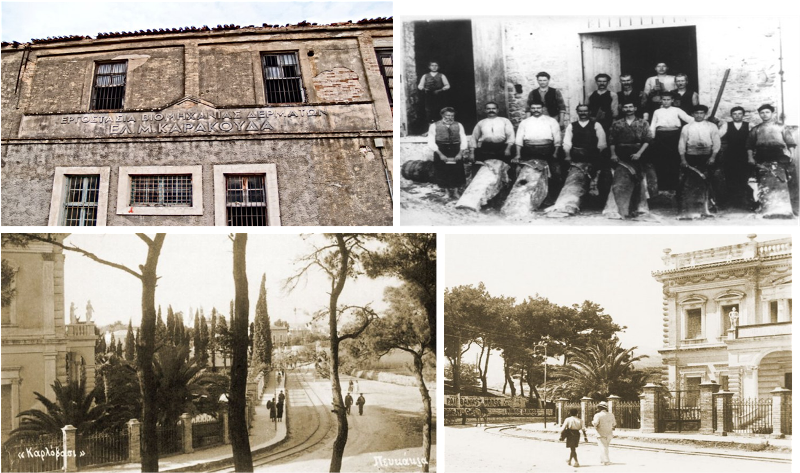 Different views of Karlovassi, city of Samos famous for its tanneries (photos from the website of the Tannery Museum – Municipality of Karlovassi (Source)
Different views of Karlovassi, city of Samos famous for its tanneries (photos from the website of the Tannery Museum – Municipality of Karlovassi (Source)
The Samians did not stop aspiring to unification with the independent Greek state and during the first Balkan war, in 1912, Themistoklis Sofoulis, Greek politician and deputy of Samos, took control of the island with a handful of Greek volunteers. The Ottomans withdrew to the Anatolian mainland and Sophoulis liberated Samos, obtaining the island’s incorporation to Greece in 1913. The status of Samos along with the islands of Mytilene, Chios and Ikaria is governed by the 1923 Lausanne Peace Treaty resulted from the First World War and signed in 1923 between Turkey and the Allied Powers .
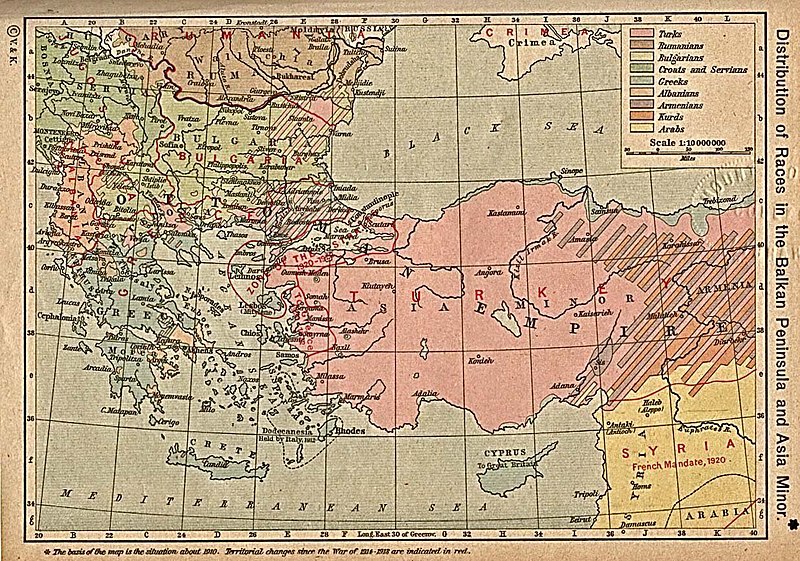
Distribution of Races in the Balkan Peninsula and Asia Minor about 1910 taken from Perry Castaneda Library Map Collection. Provisional territorial changes since the First World War (as at publication date of 1923) are indicated in red. (Wikimedia Commons)
A fertile land producing the famous wine of Samos
Although largely mountainous – the center of the island culminates at 1,095 m – Samos has several large relatively fertile plains. Since ancient times Samos has been famous for its natural riches, possessing everything that a land can offer: abundant water, wood, the purest oil in the Greek world and all kinds of agricultural products. A large part of the island is covered with vineyards and its wine, in particular that of Vathí (Malvasia grape), enjoys an excellent reputation to this day and is exported throughout the world.
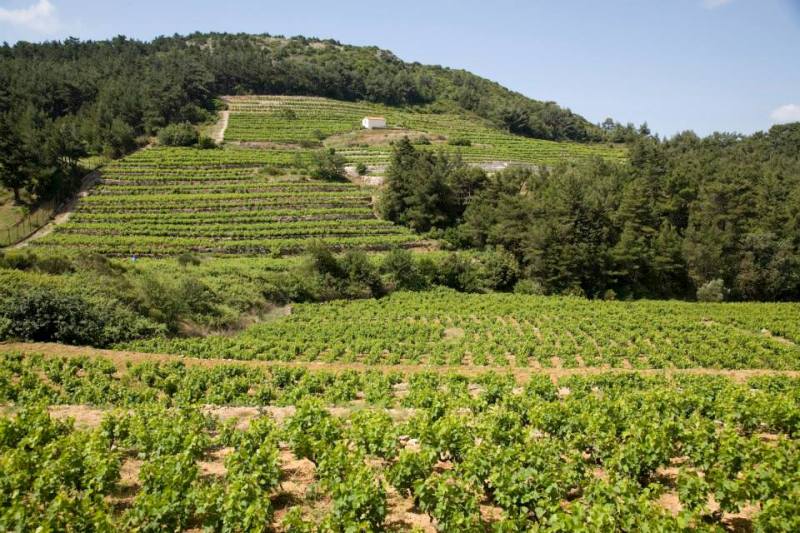
Vineyards in Samos (Source: United Winemaking Agricultural Cooperative of Samos website)
The wines of Samos have obtained hundreds of distinctions obtained in international competitions and fairs. The wine from Samos Muscat holds one of the oldest origin-controlled appellations in Europe (Protected Designation of Origin Samos). The production of “Muscat wine” was mentioned by the French traveler Tournefort in 1700 and the German Frisemann in 1787. It should be noted that the European powers began to take an interest in the wine trade, establishing consulates for this purpose on the island as early as 1562. At the end of the 19th century, the island supplied most of the eastern and western markets with its eponymous wines, while Samos was granted the privilege of producing the “communion wine” used by the Orthodox Church and the Catholic Church.
A multifaceted island
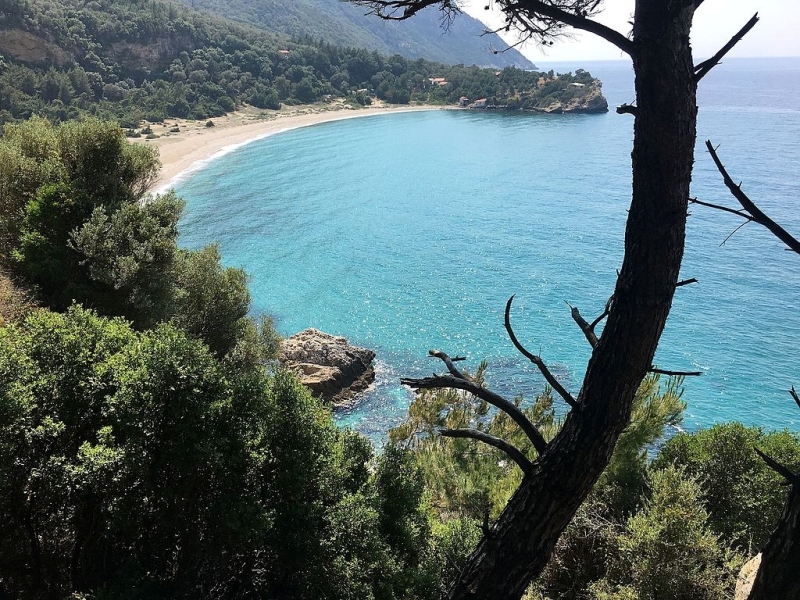
Megalo Seitani Beach, Samos@Wikipedia Project / CC BY-SA (Source)
Samos is not only an island with important monuments and historical tales. It is also a fascinating destination with overwhelming natural beauties with impressive vegetation and a pristine landscape full of colors and light. Visitors to the island discover sublime places at every step such as towering mountains, magnificent beaches, hiking and cycling trails. The island also attracts bird watchers who enjoy photographing herons, Dalmatian pelicans and flamingos that rest in Samos before continuing their migration. So many reasons to get to know this extraordinary island.
Read more on GNA:
Ancient aqueduct in Samos island, restored and open to visitors | 10 Best Wine Travel Destinations 2014
Originally written for grecehebdo.gr in French & adapted into English by Ioulia Elmatzoglou.
I.E.
TAGS: ARCHEOLOGY | HERITAGE | HISTORY

